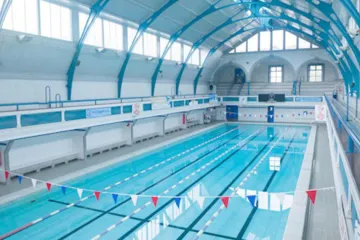The bizarre ‘space age’ swimming pools across Europe that look more like UFOs
NEXT time you’re exploring France, you might spot something that looks like a UFO.
However, it is more likely to be a swimming pool, built back in the 1970s.
Called “Piscines Tournesol” – or “sunflower pools” – it aimed to build 1,000 swimming pools across the country.
This was launched by then Secretary of State for Youth and Sport, Joseph Comiti.
They hoped to encourage more people to swim, after the a series of drowning incidents.
Not only that, but it followed a poor performance from the French swimming team in the 1968 Summer Olympics.
Around 700 were built, but there was one particular style that was praised.
With a number of designs put forward, the winner was created by architect Bernard Schoellerr – called Piscines Tournesol.
Despite plans for 250 “sunflower” pools across the UK, around 183 were built.
Each one was around 25m long and 10m wide, with a 35m diamater domed roof.
Most of the light came from the round port-hole style windows.
While named after the flower, the pools look more like a spaceship, many have said.
In good weather, the roofs open 120 degrees, so are half indoors and half outdoors.
Sadly only 100 remain across France, although a number are still open to the public, although there are a few also across Luxembourg and Belgium.
One of the easiest for Brits to visit is Piscine Tournesol d’Hellemmes, on the outskirts of Lille.
Or there is Tournesol Raymond-Mulinghausen, 30 minutes from the centre of Paris which even launched €1 swims this summer for kids.
And one of the oldest is Piscine Tournesol de Bonneveine in Marseille, which was granted heritage status in 2000.
I saw one on holiday in Luxembourg, in the early 80’s. It was on top of a hill, hidden behind some trees, just like a real UFO
It’s beautiful, so Space Age looking. Does it open any further, to expose the whole pool?
Here’s how to find the grand Grecian-style pool in the UK.
And we’ve rounded up the best outdoor swimming pools in the UK.


